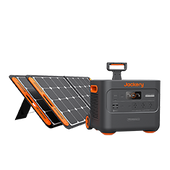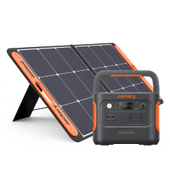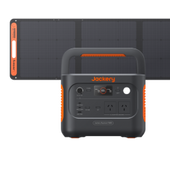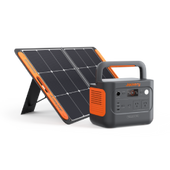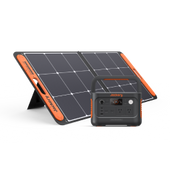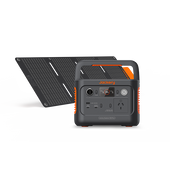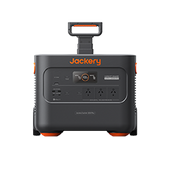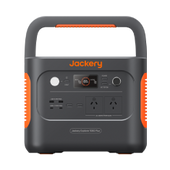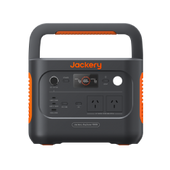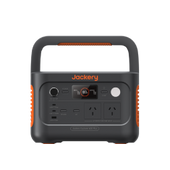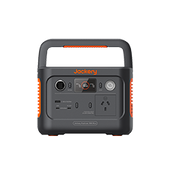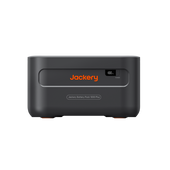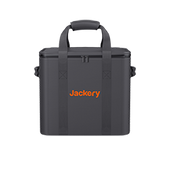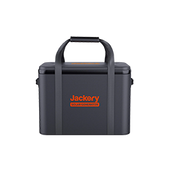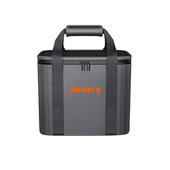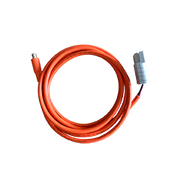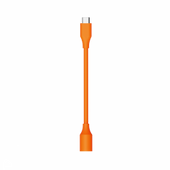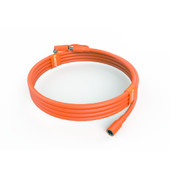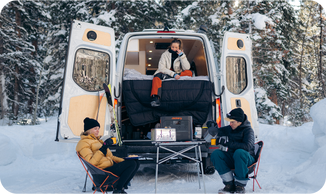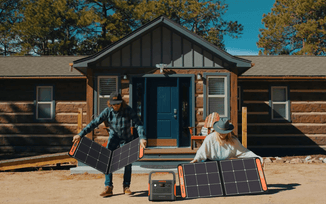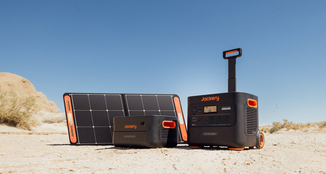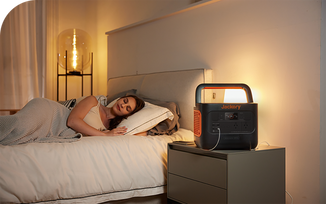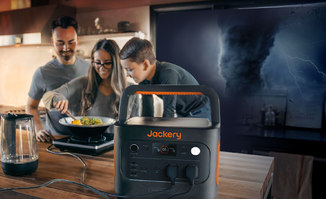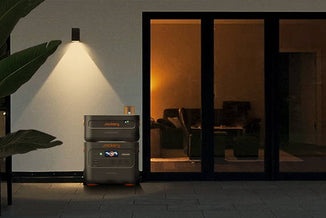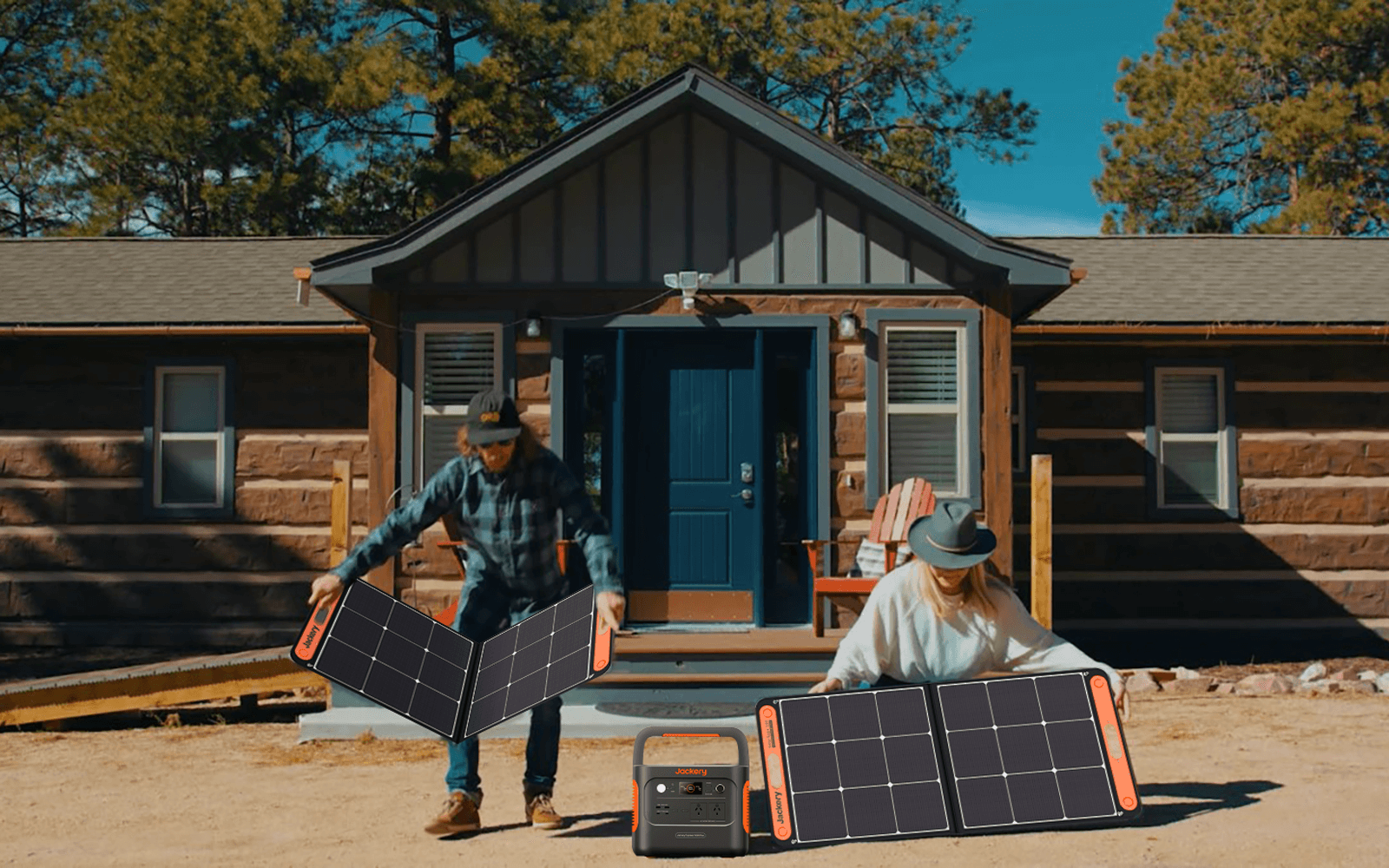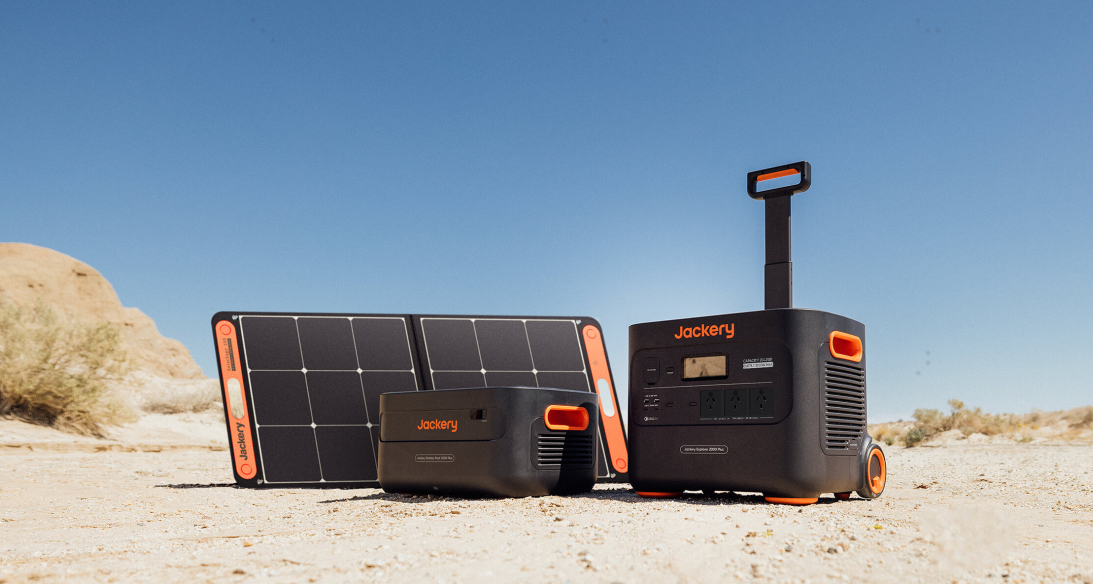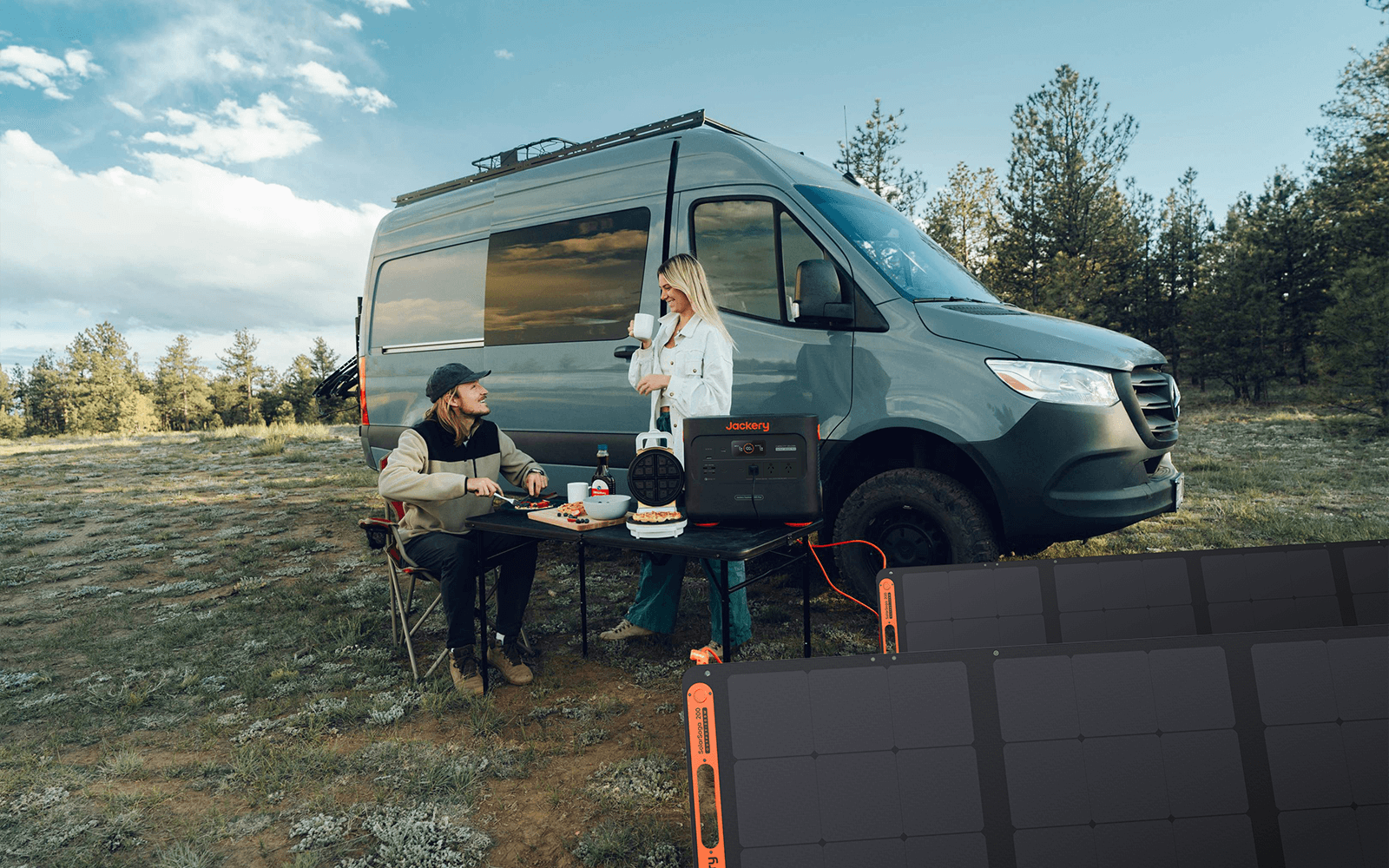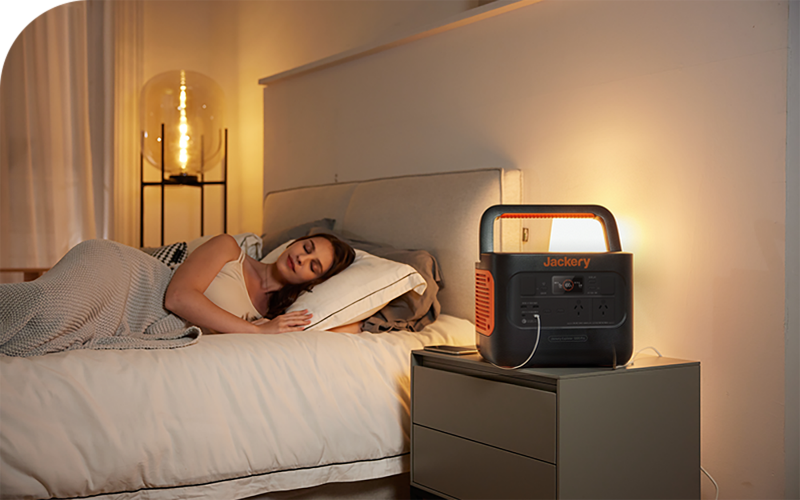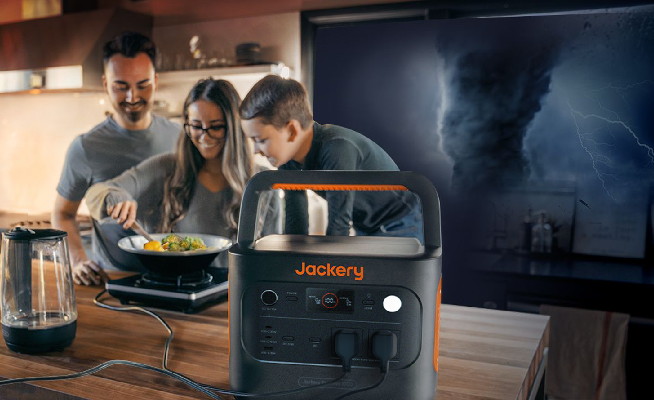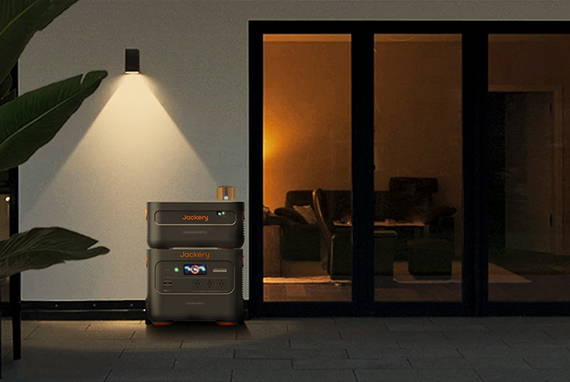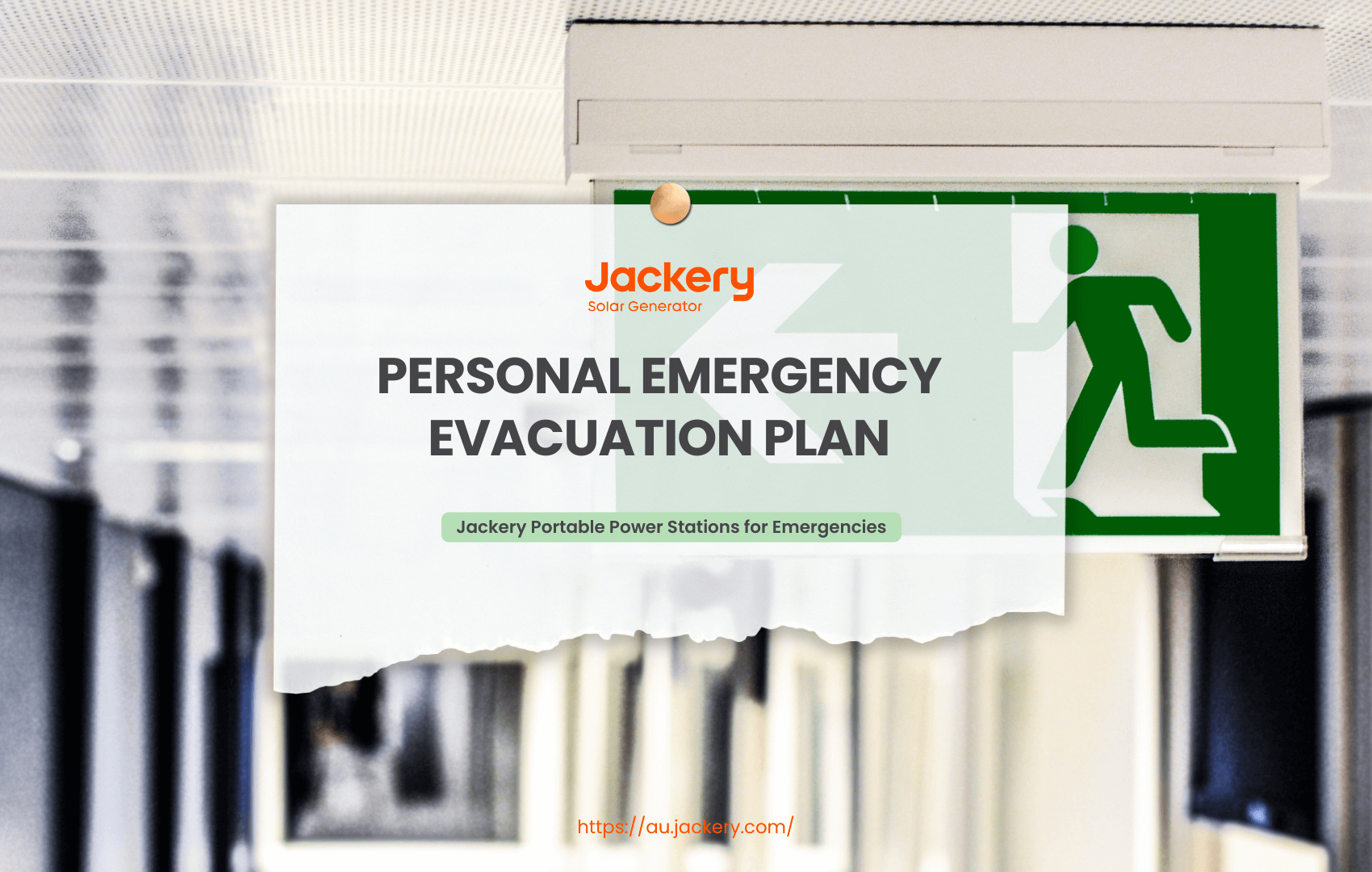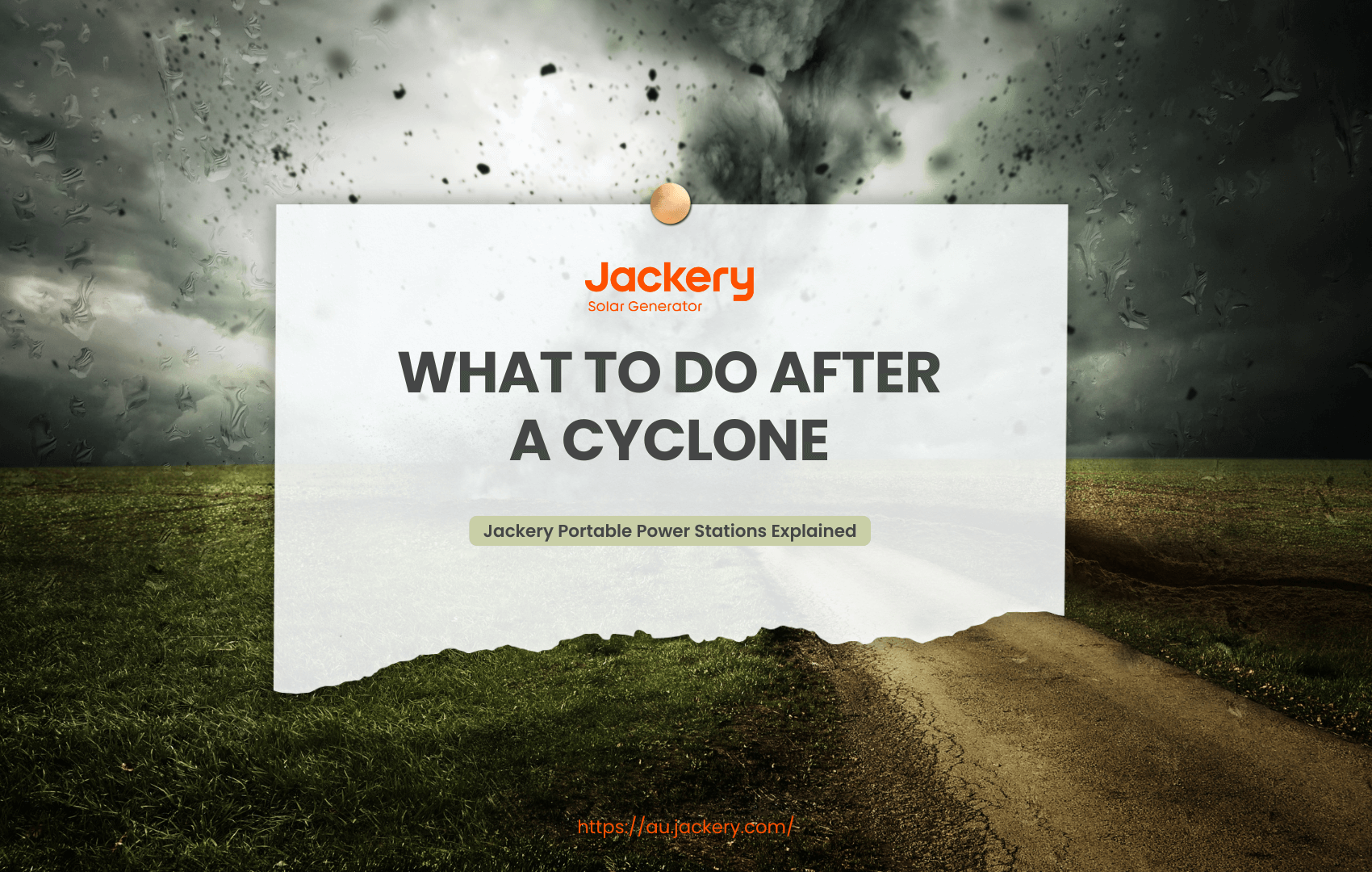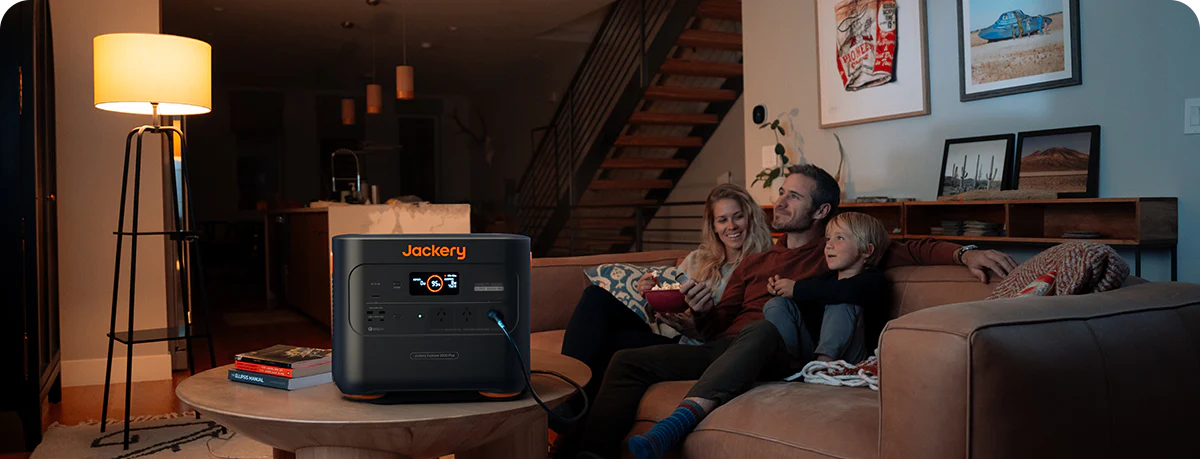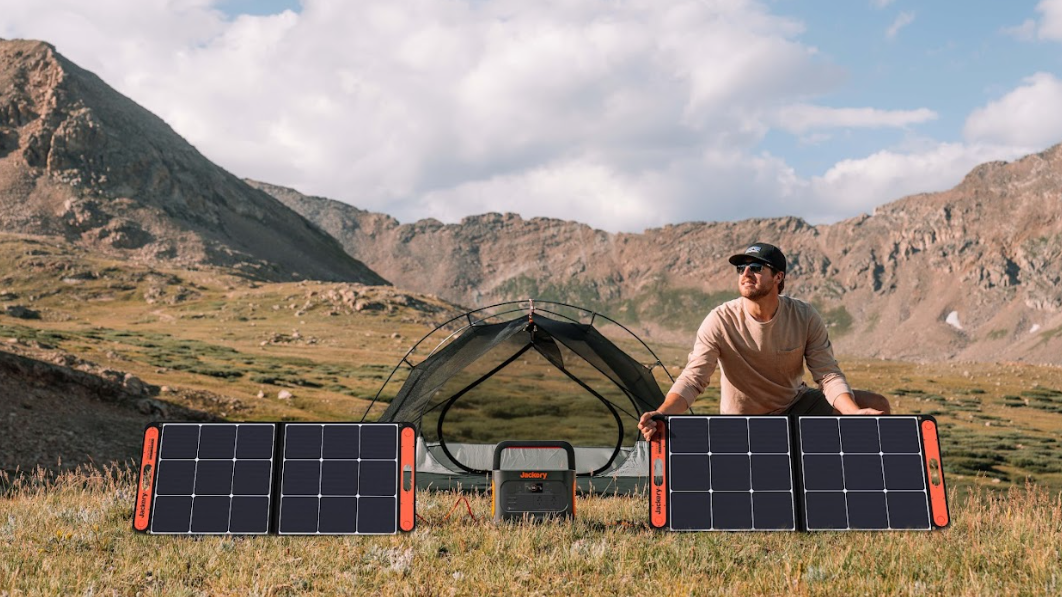|
Key Takeaways: |
|
- A Personal Emergency Evacuation Plan (PEEP) is an escape plan for people with additional support needs in an emergency. - This guide has five essential tips for creating a personal emergency evacuation plan. - In an emergency, a warden helps assist non-ambulant persons and carries out the procedures by the PEEP. - Here are other types of evacuation plans, such as hospital and pet-friendly ones. - We recommend Jackery Explorer 1000 v2 and 300 Plus to charge essential electronics and devices in an emergency. |
What Is a Personal Emergency Evacuation Plan?
Individuals with additional support requirements might use a Personal Emergency Evacuation strategy (PEEP) to escape in an emergency.
You must consider the person's access requirements in addition to these limitations, as they could need assistance with mobility, service animals, other assistive equipment, or prescription drugs to be taken into account during an evacuation.
There are two main types of PEEPs:
|
Permanent PEEPs |
These are designed for those with long-term disabilities or impairments that make it difficult to leave a building alone. |
Mobility impairments |
|
Sight impairments |
||
|
Dexterity or strength |
||
|
Hearing impairments |
||
|
Cognitive impairments |
||
|
Temporary PEEPs |
These are designed for people who are temporarily disabled or impaired in a way that makes it difficult for them to leave the building alone. |
Short-term injuries such as a broken leg |
|
Temporary medical conditions, such as a recent surgery or illness |
||
|
Pregnancy, particularly in the later stages when mobility may be affected |
What Is the Purpose Of A PEEP
A PEEP's primary goal is to guarantee that everyone, regardless of mobility or other disabilities, may leave the building quickly and securely in an emergency.
What Should a PEEP Contain
The contents of a PEEP will mostly rely on the user's demands as well as the requirements of the facility. When drafting a PEEP, the following details should be taken into account:
- The individual, including information about their impairment, whether they require a temporary or permanent plan, and how they can be helped;
- How will they get to a safe location, like the building assembly point?
- If they are aware of their escape routes (evacuation routes). Have all possible risks been removed from the escape routes in case an impaired person has to exit the building?
- Will any tools, supplies, or methods be required to assist them in an emergency, such as having a wheelchair made accessible close to their room?
- Can the individual in issue leave the facility alone, or will they require assistance in an emergency?
- Does the individual agree with the plan, and did they participate in its development?
- Has everyone participating in the plan, including those helping with the evacuation procedures, received adequate communication about the strategy?
Why Do You Need a PEEP
You must have an emergency evacuation plan to ensure that everyone in your building or organisation, including people with disabilities, can leave safely in the event of an emergency.
Site visitors should be offered Personal Emergency Evacuation Plans to adhere to Australian Standard 3745. According to this criterion, everyone must be tracked down at all times to ensure that no one—especially those needing extra assistance—is left behind in an emergency.
Relevant Laws & Standards
According to the most recent Australian Standards for Planning for Emergencies in Facilities, a personal emergency plan (PEEP) is advised for residents who need assistance leaving in an emergency. School administrators should ensure that their staff members with disabilities know the capacity to construct a PEEP.
Check the PEEP template PDF >>
How to Create a Personal Emergency Evacuation Plan
Every office and facility is unique, just like the individuals that work there. This means an evacuation strategy must be customised for the specific place and people involved.
Your emergency evacuation plan should include diagrams showing the location and the individual's escape path.
Details regarding the individual's needs for accessibility and impairments
- The aids and technologies required to assist the individual in leaving
- The individual's contact information, including emergency contact information
- The individual's typical living space, comprising the floor, room, and desk location (if relevant)
This strategy must be developed together with the disabled person, an organisation representative, and fire wardens if required. Date and sign the paper, and examine it regularly (preferably once a year at the latest).
If you are uncertain about drafting an appropriate emergency evacuation strategy, expert services are available to assist your establishment or structure in generating preparations. This can comfort your employees, the building management, and the property's disabled residents, knowing that a well-thought-out strategy has been implemented. To make sure your plan is comprehensive, several of these providers also offer free templates.

Here are a few tips on how to prepare your Personal Emergency Evacuation Plan:
Ensure personal emergency evacuation plans are inclusive. Personal emergency evacuation plans must consider the unique requirements of pupils with disabilities, such as physical, sensory, or cognitive limitations. Ensure that the staff members, instructors, wardens, and students who need help during an emergency are informed about these measures efficiently.
Conduct regular drills using assistive technology or equipment. Regular emergency drills should involve using assistive technology to ensure that students with disabilities are included. Pupils in wheelchairs, for instance, could need specific evacuation protocols, while deaf pupils might need visual alerts.
Maintain up-to-date contact information and medical records. Current medical records and contact information are essential to guaranteeing the safety of students with disabilities in case of emergency.
Medical professionals, emergency responders, and staff members should have easy access to this information. Consider the location of this data storage and potential situations in which it might not be available (e.g., the distinction between paper and cloud versions).
Train staff members in disability awareness and emergency response. To guarantee they can react effectively in an emergency, staff personnel should undergo training in emergency response protocols, mobility awareness, and handicap awareness. These can be accomplished in safe, regulated settings that support the development of confidence before a situation requires a response.
Involve parents and guardians. The trick is to communicate. This communicates your emergency protocols and response capabilities and strengthens your trust with your stakeholders—in this example, the parents and guardians.
Parents and guardians should be included in the planning process to guarantee their child's unique requirements are met in an emergency. Open and continuous communication between parents, teachers, and other staff members is necessary.
Other Considerations for Personal Emergency Evacuation Plan
Consider some factors when making your Personal Emergency Evacuation Plan.

The Roles of Wardens In Implementing The PEEP
A warden would be designated to help non-ambulant individuals in an emergency. The warden would follow the PEEP, who would already be acquainted with the individual. The mobility-impaired resident and the chosen warden would often stay on their floor within the fire escape during a building evacuation and wait for the emergency services to arrive.
A scenario like this shows how important it is for the building administration, the EPC, residents, and the head warden to be aware of the limits of everyone residing in the building.
For emergency services to be more equipped to handle crises, they, too, need to be informed that such exceptional circumstances exist. Because of this, the PEEPs should, at the very least, be maintained by the Fire Indicator Panel with the chief warden and the wardens assigned to help.
Unconscious Persons
Occasionally, people will faint during an emergency. It might be that they had a severe panic attack or bout of worry, or it could be that they breathed in too much smoke during a fire.
Anybody who loses consciousness must be removed from the immediate risk area immediately. The protocols provide "implied consent," which allows the Wardens and the inhabitants to presume that the individual would wish to be saved without worrying about being held accountable. After the unconscious individual has been safely removed from any immediate danger, it is best to administer appropriate first aid and place them in a recovery posture.
If feasible, assign someone to watch the unconscious individual until rescue arrives. It is also essential that the Chief Warden and emergency services are informed as soon as possible about the occupant's medical condition and whereabouts.
Persons in Locked / Unsearchable Areas
Protected spaces must be carefully inspected to ensure every resident is there and nobody is left inside. When a fire occurs, the person responding to the issue or the resident should feel the doorknob with the back of their hand to see whether there is a fire on the other side.
If the door seems cool, it should be cautiously opened to allow one to peer inside. To get the attention of anyone inside, knock three times loudly and then yell if the door does not open.
If you cannot search a room and nobody responds to your attempts to contact them, don't assume the room is vacant. It should also be considered that the individual inside could have fainted during the incident, further increasing their vulnerability and need for aid. Inform the Chief Warden about the unsearchable area in such a situation.
Other Types of Emergency Evacuation Plans
One particular evacuation strategy is a PEEP. Additionally, there is a generic kind that you need to be aware of called a General Emergency Evacuation Plan (GEEP).
Any public facility or workplace with temporary employees must have a GEEP. Those unfamiliar with a building's layout—such as guests or employees who are not often on-site—may find it challenging to locate escape routes in an emergency.

Plans for general emergency evacuation assist in resolving this issue. A visitor needs to be able to scan a GEEP and understand quickly:
- The arrangement of the building
- Procedures for evacuation
- Locations of communication and emergency equipment
- Even if it's their first time on the scene, anyone with this crucial knowledge should be able to organise and carry out a speedy departure from the building.
Additionally, a GEEP is helpful to those with limited movement. People with trouble moving around might need to call for help in an emergency or stay away from particular areas (like staircases). The GEEP has the information they need for this.
A. Disability Evacuation Plans
When the alarm goes off, wheelchair users should go to a haven or stay put with their helper. The evacuation aide should then go to the building's exterior evacuation assembly point and report the disabled individual's location to the Public Safety/campus police Department or the City Fire Department. If the disabled person is by themselves, they should call 000 and report their current position as well as the region they are heading for sanctuary.
Mobility-impaired wheelchair users should only be evacuated from staircases by qualified specialists. Untrained individuals should only attempt to remove wheelchair users in the most dire circumstances. It is never safe to roll a wheelchair downstairs.
In an emergency, those with mobility disabilities who can walk alone might be able to climb stairs with minimal help. The person should hold off on trying the stairs until the heavy traffic has passed if there is an impending risk.
Until emergency services arrive and decide if evacuation is necessary, the person with a disability may elect to remain in the building, utilising the available choices if there is no imminent threat, such as perceptible smoke, fire, or strange odour.
Hearing Impaired. While many campus buildings lack fire alarm strobe lights, some do. Individuals with hearing impairments must be made aware of emergency circumstances as they might be unable to hear audio emergency alerts. One way to communicate emergency instructions is to write a brief, clear message requesting evacuation.
Modifying the building's fire alarm system can provide reasonable accommodations for those with hearing impairments, especially for residents who spend most of their day in one place. If someone needs these accommodations, they should contact DSS (contact details are provided below).
B. Hospital Evacuation Plans
Whether whole or partial, hospital evacuation plans should consider pre-planning and the incident command and management structure for the hospital's operations area (community). Hospitals should be aware of the local procedures and preparations to facilitate evacuations before an incident occurs.
They should also create a Memoranda of Understanding (MOUs) with other hospitals to facilitate mutual help and transfer in an emergency. Please refer to the CHA Hospital Evacuation Plan Checklist.
In line with the procedures set forth for emergency notification in the region, the hospital should notify the Medical Health Operational Area Coordinator (MHOAC), the Emergency Operations Centre (EOC), and/or the local emergency medical services agency (LEMSA) when a possible or actual evacuation is first being considered.
C. Pet-friendly Evacuation Plans
If you own large animals, you should take extra precautions. Examples are horses, cattle, sheep, goats, and pigs. Plan to have enough cars, trailers, and staff to assist and transfer any animal if you decide to evacuate. If you choose not to evacuate, consider relocating large animals outside or into sheltered locations.
Ensure you have all the resources and equipment necessary to care for your exotic pets. When relocating them—to a friend's house, an emergency shelter, etc.—ensure that skilled individuals handle, transport, and care for them.

Jackery Portable Power Stations for Emergencies
A personal emergency evacuation plan guarantees you are prepared to evacuate safely during a fire, flood, or other calamity. A portable power station is essential for emergencies as it offers a dependable and accessible source of electricity for vital devices such as medical equipment, communication tools, and necessary appliances when the primary power grid fails. Thus, it ensures safety and sustains fundamental operations during a crisis.
As a backup power source, Jackery Portable Power Stations lets you keep essential electronics running even when the main power goes out due to storms, power blackouts, or natural disasters. These power stations can also power medical devices that keep people alive, like ventilators and oxygen concentrators. This is very important for people who are dependent on these devices.
Jackery Portable Power Stations may be rapidly charged using solar panels, automobile chargers, and wall outlets, eliminating concerns about powering devices in any location. They operate effectively in varying temperatures, rendering them suitable for emergencies.
Jackery Explorer 1000 v2
The Explorer 1000 v2 portable power station provides an output of 1500W, which is 50% greater than earlier models. This effectively supplies power to high-demand devices such as refrigerators, kettles, and portable air conditioners. This device includes USB-A and USB-C ports, offering dual Power Delivery (PD) charging of up to 100W. It can concurrently charge multiple devices, such as phones and laptops, as an essential tool for various power requirements.
The app's Emergency Charge Mode enables the Explorer 1000 v2 Portable Power Station to achieve a full charge in under one hour, providing essential power backup during low battery situations. Charging from 0% to 100% in two hours via an AC wall outlet also extends battery life.
Prepare for potential emergencies with the Jackery 1000 v2 as a reliable resource. During electrical outages, maintain power for critical devices such as mobile phones, radios, or medical equipment. The Jackery 1000 V2, characterised by its substantial capacity and diverse output options, effectively offers assurance in managing unforeseen circumstances.

- High-Level Outdoor Durability
- 1500W Output / 1070Wh Capacity
- Weighs just 10.8 kg
- Full Charge in 59-min with Emergency Super Charging Mode
- LFP battery with a 4000-cycle lifespan
|
Jackery Explorer 1000 v2 Working Hours |
|
|
Emergency Light (3W) |
48H |
|
Mobile Phone (29W) |
20 Times |
|
Laptop (80W) |
9 Times |
|
CPAP Machine (200W) |
4H |
|
Ventilator (20W) |
25H |
Jackery Explorer 300 Plus
The Jackery Explorer 300 Plus Portable Power Station is ideal for those who value convenience and efficiency in an emergency. It fits nicely into your lifestyle because it is exceptionally lightweight and compact, at just 3.75kg. Without compromising performance, the 300 Plus offers unparalleled portability whether you're getting ready for an emergency or needing dependable backup power.
Thanks to its 288Wh capacity and 300W output, this power station can support a variety of items, including small appliances and personal electronics. It can charge many devices quickly and effectively because of its dual USB-C ports, each offering up to 100W. The 300 Plus is the best portable energy solution because it has four different charging options: solar, automobile, AC power socket, and USB-C.
At its core, the Explorer 300 Plus is built to last. With a fantastic 10-year lifespan and over 3,000 cycles, the LFP battery guarantees dependability. ChargeShield Technology and other cutting-edge safety features guard against short circuits and overvoltage. The compact, powerful, and feature-rich 300 Plus is an essential tool for homeowners and explorers.

- Portable: 12.8V/22.5Ah/3.75Kg
- Long-lasting: Features an LFP battery with a 10-year lifespan.
- Ultra-Safe: High FCC/CE and UL certifications, innovative ChargeShield Technology (52 forms of protection).
- Sustainable: Whisper-quiet, emission-free, and offers 4-way charging (solar, mains, car lighter, type-C).
|
Jackery Explorer 300 Plus Working Hours |
|
|
Mobile Phone (29W) |
13 Times |
|
Laptop (80W) |
2.2 Times |
|
Ventilator (20W) |
11H |
|
CPAP Machine (200W) |
1.1H |
|
Radio (60W) |
4H |
Personal Emergency Evacuation Plan FAQs
The following are the frequently asked questions about the personal emergency evacuation plan.
1. What does an emergency evacuation plan include?
These include the nature of the situation and the building's attributes (such as its construction material and number of floors). Your strategy should outline the precise circumstances that necessitate all office workers and personnel evacuation.
2. What is a general emergency plan?
An emergency plan outlines how to deal with unforeseen or abrupt circumstances. The goal is to be ready to Prevent fatalities and injuries, minimise damage to equipment, goods, and structures, and preserve the community and the environment.
3. What are the four stages of evacuation?
Strategic Airlifting. There are no warnings to get ready to leave due to the emergency.
Evacuation Alert. People have to be prepared to leave the region.
Order of Evacuation. The region has been ordered to be evacuated.
Recall the evacuation.
Final Thoughts
Personal emergency evacuation plans are essential in various contexts, whether you are a student, business owner, parent, or member of any other institution. A well-thought-out plan guarantees that you and those around you are ready to react appropriately in dire circumstances. They are vital in reducing hazards, ensuring a safer environment for all parties, and empowering people and organisations to manage crises confidently. By creating, carrying out, and updating these plans regularly, you proactively improve safety and resilience in any circumstance.

